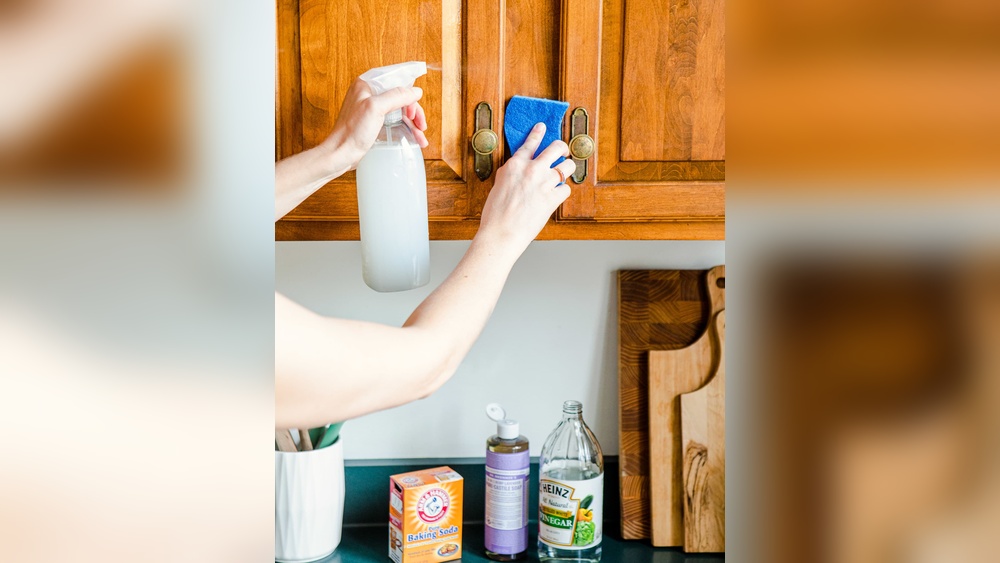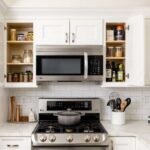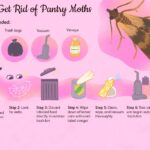Grease buildup on your kitchen cabinets can make your whole kitchen look dull and dirty, even if everything else is spotless. If you’ve noticed sticky, oily spots or stubborn grime clinging to your cabinets, you’re not alone—and the good news is, you don’t have to live with it.
Imagine restoring your cabinets to their original shine with simple, easy steps that anyone can follow. You’ll discover effective and safe methods to remove grease from your kitchen cabinets, using common household items and smart cleaning tricks. Ready to transform your kitchen and impress everyone who walks in?
Keep reading to learn how to tackle that grease once and for all.
Grease Causes On Cabinets
Grease forms on kitchen cabinets mainly from cooking oils and food splatters. Smoke from frying and baking also adds to the greasy layer. Over time, this grease sticks and builds up. It makes cabinets look dirty and can be hard to clean. Kitchens with poor ventilation have more grease on cabinets. Touching cabinets with oily hands spreads the grease further. Using the stove without a hood fan allows grease to settle on surfaces. Regular cleaning helps prevent thick, stubborn grease. But if left too long, grease becomes sticky and tough to remove. Understanding these causes helps in keeping cabinets clean and fresh.
Basic Cleaning Solutions
Mix a few drops of dish soap with warm water in a bowl. Dip a microfiber cloth into the solution and wring it out well. Gently rub the greasy cabinets using small circular motions. This helps to break down oil and grease.
Use a clean, damp cloth to wipe away the soap residue. Dry the cabinets with a dry microfiber cloth to prevent water spots. Microfiber cloths are perfect because they trap dirt and do not scratch surfaces.
Tackling Stubborn Grease
Baking soda paste works well on tough grease. Mix baking soda with water to form a thick paste. Spread it on greasy spots and let it sit for 10 minutes. Then, gently scrub with a soft cloth or sponge. Wipe clean with a damp cloth to remove residue.
Commercial degreasers are made to break down grease quickly. Follow the instructions on the label carefully. Spray or apply the degreaser on the cabinet surface. Wait a few minutes to let it work, then wipe off with a clean cloth. Always test a small area first to avoid damage.
Citrus-based cleaners use natural oils from lemons or oranges. These cleaners cut through grease without harsh chemicals. Apply the cleaner on the cabinet, let it sit briefly, then wipe clean. The fresh scent is an added bonus.
Mineral oil application helps to remove greasy stains and adds shine. Dab a small amount of mineral oil on a soft cloth and rub it into the cabinet surface. This can help break down grease and keep wood cabinets looking fresh.
Tools For Grease Removal
Soft brushes and sponges help clean grease gently.
Use soft brushes to reach corners without scratching surfaces. Sponges absorb grease and dirt well. Choose sponges that do not scratch your cabinets.
Non-abrasive scrapers remove thick grease layers safely. These scrapers slide under grease to lift it off. Avoid metal scrapers to protect cabinet finishes.
Soft brushes, sponges, and scrapers work well together. Start with brushes or sponges. Use scrapers only if grease is hard to remove.
Rinsing And Drying
After cleaning, remove all soap and grease residue using a clean, damp cloth. This step is essential to avoid sticky buildup and keep cabinets shiny. Wipe gently but thoroughly to ensure no cleaning solution remains.
Use a dry microfiber cloth to dry the cabinets completely. Drying helps prevent moisture damage, such as warping or peeling of the cabinet surface. Pay special attention to corners and edges where water may collect.
Keep kitchen cabinets dry to avoid mold and damage. Avoid letting water sit on the surface for long. Proper rinsing and drying protect the cabinets and keep them looking fresh and clean.

Safety And Testing
Test any cleaner on a small, hidden area first. This helps to check if the cleaner harms the cabinet’s finish. Use a soft cloth and apply a small amount of cleaner. Wait a few minutes and look for any changes in color or texture.
Many cleaners can damage cabinet finishes. Avoid harsh chemicals or scrubbing too hard. This can cause scratches or remove the paint or varnish. Use gentle cleaners and soft cloths to keep cabinets safe.
Always read the cleaner’s label for safety advice. Wear gloves to protect your skin. Keep the room well-ventilated to avoid breathing in fumes. Taking these steps keeps both your cabinets and you safe.
Maintenance Tips
Clean kitchen cabinets often to stop grease build-up. Use a soft cloth and mild soap for quick cleaning. Wipe spills right away to keep grease from sticking. Avoid using harsh chemicals that can damage the cabinet surface.
Ventilate the kitchen well during cooking. This helps reduce grease particles settling on cabinets. Use range hoods or open windows to keep air moving. Regularly clean the hood filters to keep them effective.
- Wipe cabinets weekly with warm soapy water.
- Dry cabinets well after cleaning to prevent damage.
- Use a microfiber cloth for gentle cleaning.
- Apply a small amount of mineral oil to protect wood surfaces.
- Keep cooking oils and sprays away from cabinet edges.
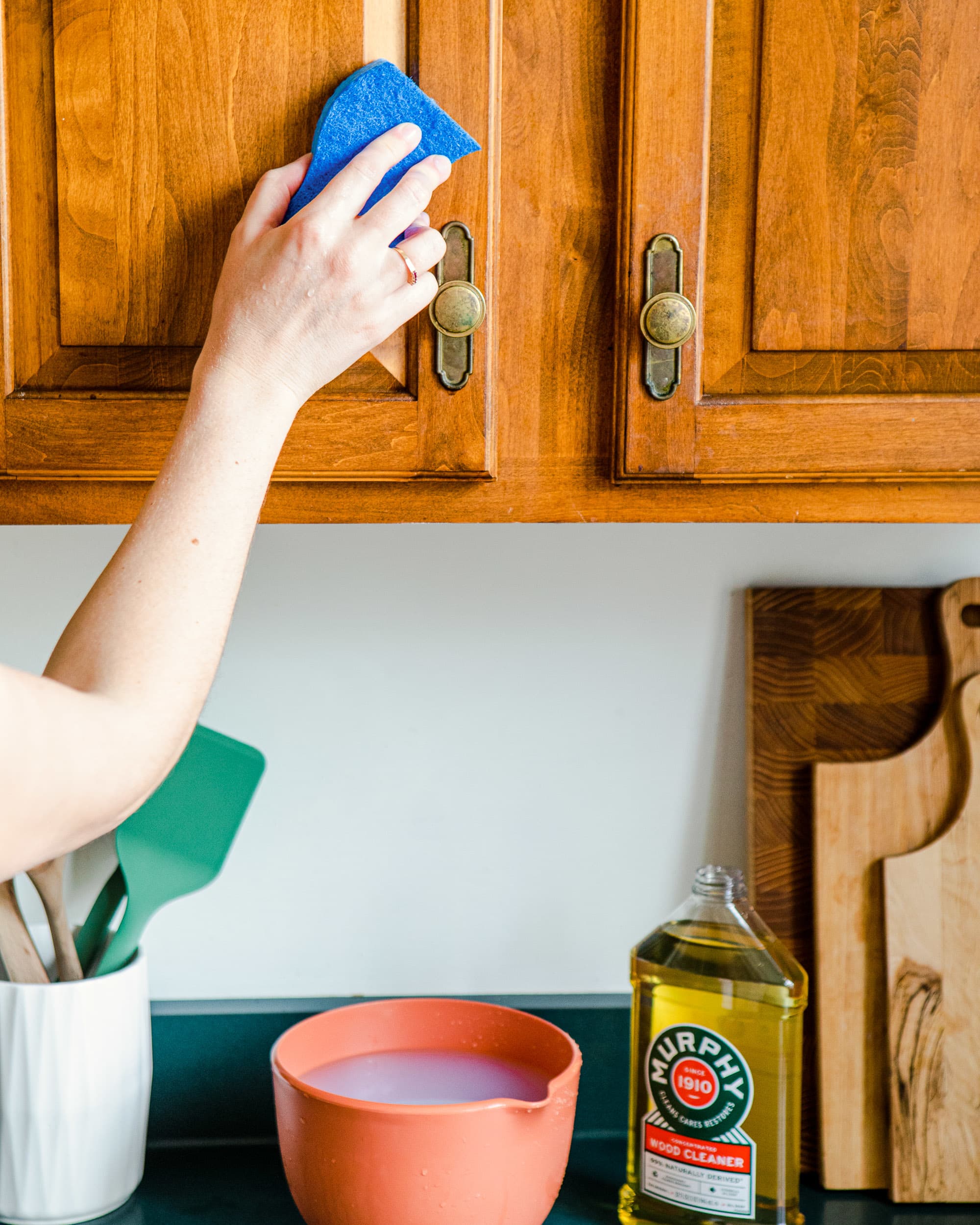
Frequently Asked Questions
How Do You Remove Icky Sticky Greasy Gunk From Kitchen Cabinets?
Mix dish soap with warm water and dip a microfiber cloth in it. Rub cabinets gently in circular motions to loosen grease. For stubborn spots, apply baking soda paste or use a citrus-based cleaner. Rinse with a damp cloth and dry thoroughly to prevent damage.
How To Get Tough Grease Off Kitchen Cabinets?
Mix warm water and dish soap, then scrub cabinets with a microfiber cloth. For stubborn grease, apply baking soda paste, let sit, and scrub gently. Use a commercial degreaser or mineral oil for heavy buildup. Rinse with a damp cloth and dry thoroughly to prevent damage.
What Is The Best Degreaser For Kitchen Cabinets?
The best degreaser for kitchen cabinets is a mix of dish soap and warm water. For tough grease, use a baking soda paste or a commercial citrus-based degreaser. Apply food-grade mineral oil on thick grease. Always rinse and dry cabinets after cleaning to prevent damage.
Does Wd-40 Remove Grease From Kitchen Cabinets?
WD-40 can remove grease from kitchen cabinets but may leave an oily residue. Use dish soap and warm water for safer cleaning. For tough grease, try baking soda paste or commercial degreasers. Always wipe and dry cabinets thoroughly after cleaning to prevent damage.
Conclusion
Removing grease from kitchen cabinets is simple with the right steps. Use warm water and dish soap for regular cleaning. For tougher grease, try a baking soda paste or a citrus cleaner. Always wipe cabinets with a damp cloth afterward to remove residue.
Dry them well to keep cabinets looking fresh. Regular cleaning prevents grease buildup and keeps your kitchen neat. Follow these easy tips to maintain clean, grease-free cabinets every day.

Yes, working as , Food Blogger and Product Reviewer for last 6 years. Here you will get amazing deals for Smart kitchen products. I am your best source for the latest update in cooking trends. I provide insightful articles, reviews, and analysis on cutting-edge kitchen gadget. My mission is to empower readers with the knowledge they need to stay ahead in a rapidly evolving coking world. Join me as we explore the future of food technology and how it shapes our lives today and tomorrow.

